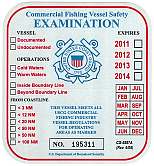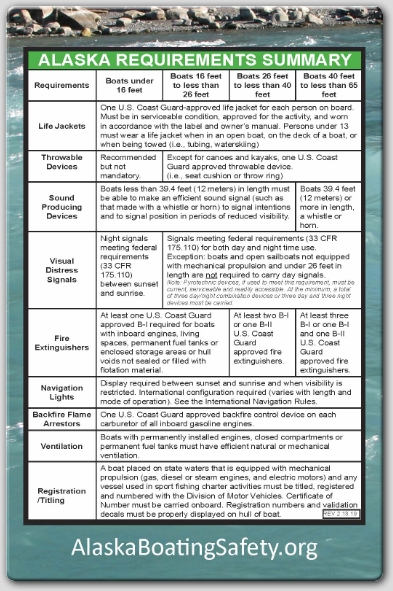Welcome to the District 17 Web Site


![]()
Coast Guard command centers update primary phone numbers in Alaska
JUNEAU, Alaska — The Coast Guard Arctic District has updated the primary phone numbers for its three command centers in Alaska.
These numbers are used for search and rescue and emergency purposes.
The phone numbers are active now and the existing numbers are being phased out. Advance notice will be provided before the existing numbers are retired.
The new primary numbers for the command centers are:
Arctic District Command Center, Juneau: 800-478-5555
Sector Southeast Alaska Command Center, Juneau: 866-759-6061
Sector Western Alaska and U.S. Arctic Command Center, Anchorage: 866-396-1361
This change is part of a broader effort to modernize and streamline communications infrastructure within the U.S. Coast Guard.
Safe Boating Week
Whether it's Safe Boating Week, or just another day on the water, a safe outing begins with proper planning and preparation. It's also critical to know how to hail for assistance from another boater or your local waterway authority if needed.
Here are the top ways, some of which may be legally required to have aboard your boat, to get assistance on the water:
VHF Radio - A VHF (Very High Frequency) radio, which has a range of several miles, is the most reliable way to communicate with other boats and emergency responders on most waterways. New Digital Selective Calling (DSC) radios with a red distress button can even send an emergency call and other important information to authorities automatically when properly installed and registered.
Emergency Beacon - An emergency beacon, such as an EPIRB (Emergency Position Indicating Radio Beacon) or PLB (Personal Locator Beacon), can be activated to send a distress signal to satellites and rescue authorities. These devices are designed to work in remote areas where cell phone coverage is not available.
Sound Producing Device - A sound producing device, such as an installed horn, a handheld air horn, and even a whistle, can be used to signal for help. Five or more blasts from a horn or a whistle indicates danger or a dangerous situation is unfolding. Sound producing devices are required by law on most boats and can be heard over a considerable distance.
Visual Distress Signals - Visual Distress Signals (VDS) such as pyrotechnic flares and certain battery-operated SOS light beacons can be used to signal for help when you’re out on the water. Flares and Coast Guard-approved distress lights can be seen from several miles away and are an effective way to signal for help when other methods of communication are not available.
Flag - A distress flag is an orange flag with a black square and a black circle. If you’re in distress, you can hoist the flag to signal other boats that you need assistance. This is a good alternative for use on small, wet watercraft, like kayaks and personal watercraft, where traditional flares could get wet or storage aboard is a challenge.
It's important to note that in an emergency, time is critical. You should be familiar with your safety gear and communication devices and where they're stowed aboard, before you head out on the water. In addition, it's a good idea to have a plan in place for how to respond in an emergency and to communicate that plan with everyone on board.
There are several ways to get your Free Vessel Safety Check!
- This link works great if you are in the larger Towns & Cities.
- This link will sometimes work better if you are in the smaller Towns & Villages.
- Go to the left of this page and click on Divisions & Flotillas, then pick the Flotilla closest to you.
- Click here for Request Info Form.
- Float Plan Central Print or Email one, then give it to someone every time you go out.
- Boating Safety Resource Center One More Great Place For Info.
- State Of Alaska Office Of Boating Safety
Safety! The peace of mind that your boat meets federal safety standards and that in an emergency, you will have the necessary equipment to save lives and summon help. Additionally, you will avoid substantial fines should you ever be boarded by the U.S. Coast Guard or other law enforcement and found to be in violation.
In many cases, boating insurance agencies offer discounts for vessels which undergo a Vessel Safety Check every year. All decals and safety checks are void December 31st of the year they are inspected, they are also void should the operator /owner fail to maintain the vessel's equipment or the vessel itself to the standard at the time of the safety check.


 Marine Safety Alert – This safety alert provides information related to Kidde brand fire extinguishers. Nearly 40 million extinguishers involving 134 different models have been recalled. These fire extinguishers were manufactured between…" Read more "
Marine Safety Alert – This safety alert provides information related to Kidde brand fire extinguishers. Nearly 40 million extinguishers involving 134 different models have been recalled. These fire extinguishers were manufactured between…" Read more "
Marine Safety Alert - Let us enlighten you about LED lighting! Potential interference of VHF-FM Radio and AIS Reception. " Read More "
 If you are a Commercial Fishing Vessel Owner or Operator, you should get a Free Commercial Fishing Vessel Safety Examination before you head out for your fishing season. The peace of mind that your Vessel meets federal safety standards and that in an emergency, you will have the necessary equipment to save lives and summon help. Additionally, you will avoid substantial fines should you ever be boarded by the U.S. Coast Guard or other law enforcement and found to be in violation.
If you are a Commercial Fishing Vessel Owner or Operator, you should get a Free Commercial Fishing Vessel Safety Examination before you head out for your fishing season. The peace of mind that your Vessel meets federal safety standards and that in an emergency, you will have the necessary equipment to save lives and summon help. Additionally, you will avoid substantial fines should you ever be boarded by the U.S. Coast Guard or other law enforcement and found to be in violation.


